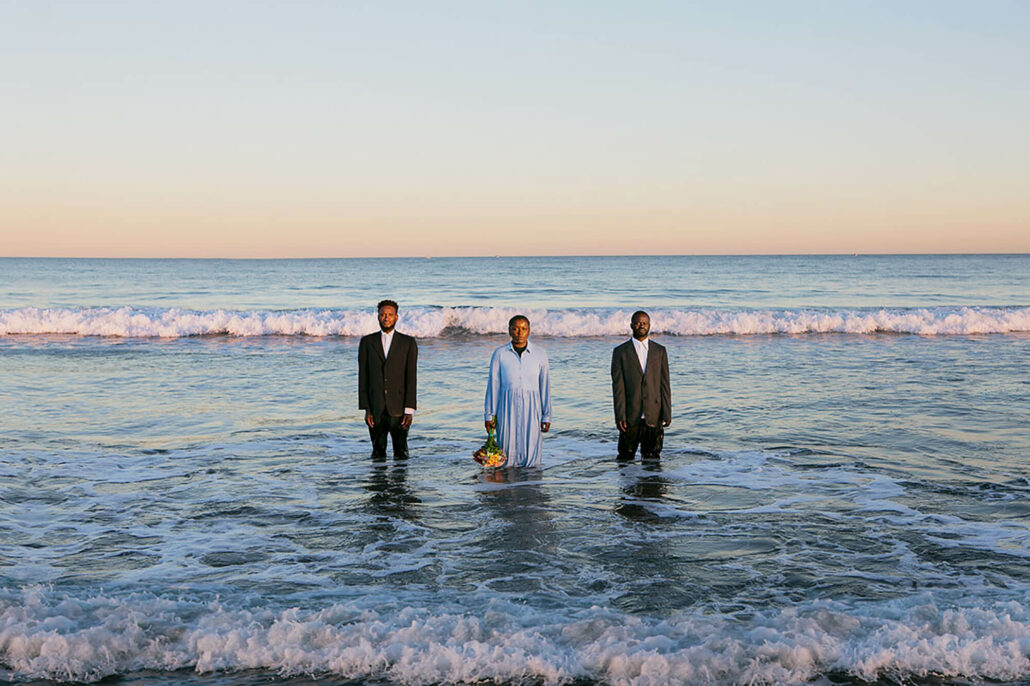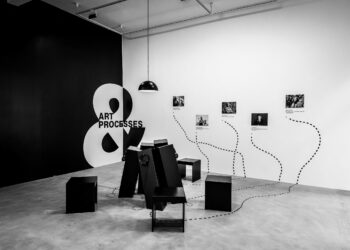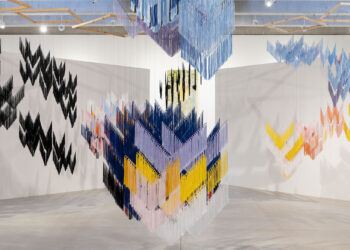Do you think freedom exists?

Courtesy of the artist and Sabrina Amrani.
What are the (Black) geographies of freedom that are still to be imagined?
What are the infrastructures of hope?
The advancement and proliferation of technologies of surveillance and the control of movements is a growing violation of individual and collective freedom – for many, borders are a geopolitical construct of physical and mental entrapments.
In the exhibition ‘The Sun Does Not Rise in the North‘, Mónica de Miranda proposes one-person tales navigating between fictional and non-fictional narratives in the affective space of the border. The exhibition investigates the landscapes that witness hope, from the journeys of migration between Africa and Europe, set within a duality of existence and citizenship: one contemplating Europe and the other a return to Africa.
We are immersed within the contested border of Ceuta in Spain and Melilla in Morocco in these spaces of transition where the artist spent time with the territory and gathered testimonies. De Miranda gives a nuanced gaze into the familiar scenario of the ‘migration crisis’ and its relationships with the fortress of Europe, underpinning the ongoing colonial politics of violent rejection of people that attempt to reach its soil every day.
The exhibition examines the complex diversity of personal and collective histories interconnected between the migrant and the diasporic experience in Europe. It is a continuous relational praxis that de Miranda depicts and deconstructs through counter-narratives of belonging, as well as on the (re)elaboration of memory in post-colonial discourses.
The African liberation struggles, and revolutionary movements fuel the artist’s imaginaries: The building of an archive of transnational political efforts – one that reminds us to look onto the past for our current reflections, as a continuous entity in our horizons, and where liberation sits within the ongoing narratives of strength, resilience, and vulnerability. In the film o sol não nasce a norte (the sun does not rise in the north) and in the photographic works, the visual narratives give (back) dignity and grace to the characters through the poetics of (body) languages.
Here, and generally within de Miranda’s cinematographic geographies of affection, the main characters are in deep connections with the ecosystems and the landscapes: the sea, the forest, the mountains, the desert, the sand, and palm trees are mothering the fugitive and disposable bodies, waves are caressing the ears amongst ethereal soundscapes, symbolic spiritual colours of the sun, blood, water and trees. Clad in white clothing, they are calling for the sun. The bodies are aligned with its cyclical movement. The landscapes alternate between crisp blue skies, natural fog and blurry haze depicting the start and end of the day – and of journeys leading to freedom, alienation, loss or slow spiritual death.
In the film, a man says that the body has no end, but life does. In Bakongo philosophy, at sunset and sunrise, “the living and the dead exchange day and night. The setting of the sun signifies man’s death and its rising, his rebirth, or the continuity of his life. Bakongo believe and hold it true that man’s life has no end, that it constitutes a cycle, and death is merely a transition in the process of change.” The movements and itinerant passages of those that have arrived, but only to leave, are captured in the memory of the soil, of the land that is archiving each of their steps. In the film, the archaeological digging of the land, what was once there and now buried, interrogates what else is left of our bodies without the earth.
Extract of the text ‘The Sun Does Not Rise in the North’ by Cindy Sissokho.
The exhibition will be on view from the 6th of May until the 6th of July, 2023. For more information, please visit Sabrina Amrani.



